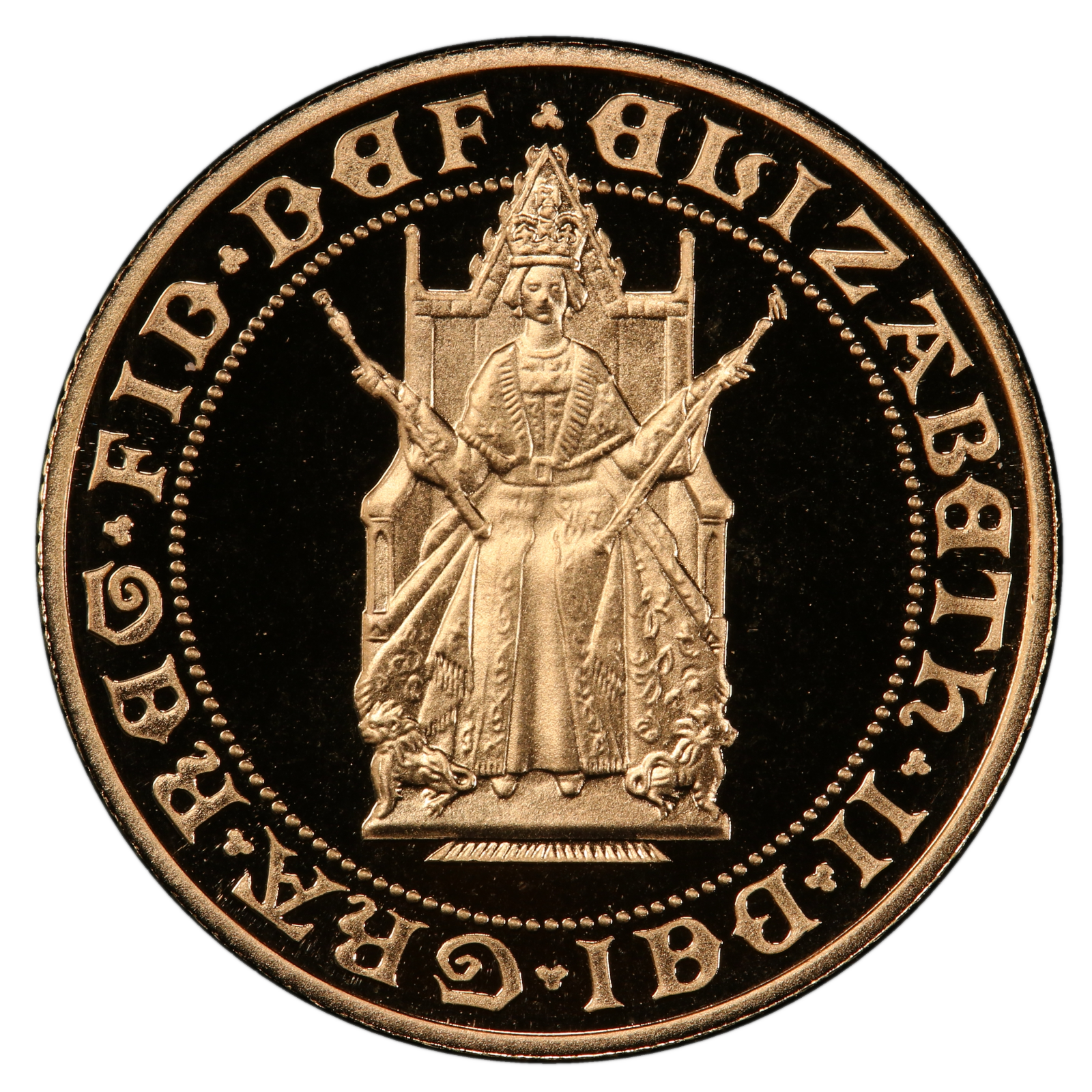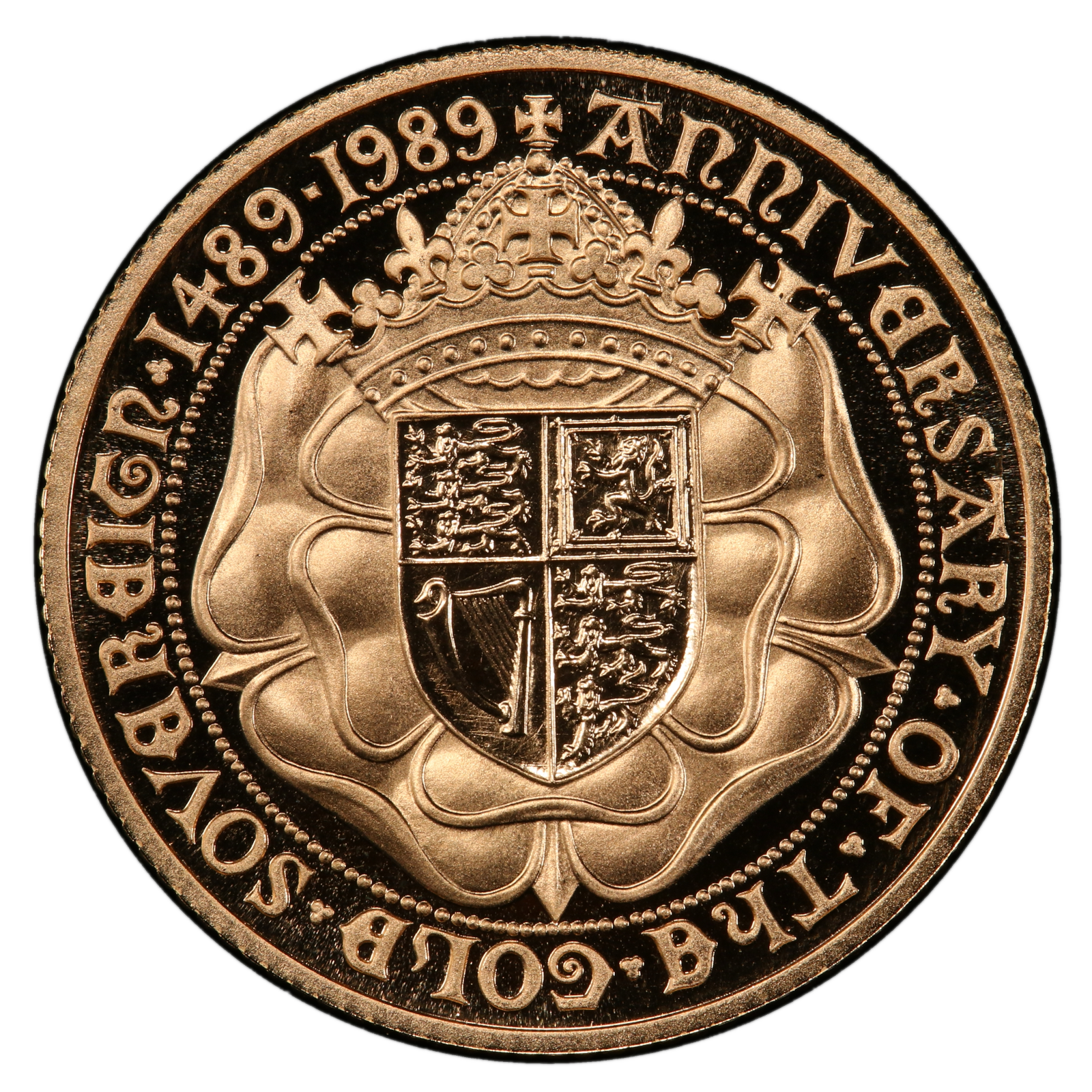

This one-year-only edition of the gold sovereign was produced in 1989 to commemorate the 500th anniversary of the first hammered sovereign. The coin was struck by The Royal Mint in London in 22-carat gold and has a proof striking standard. So it’s of the highest quality. The 1989 sovereign is now one of the most sought-after coins of Queen Elizabeth II’s reign.
The Design
The British artist and sculptor Bernard Sindall designed both the obverse and reverse sides of the 1989 sovereign. The coin marks the first time that there was a change to the reverse side of a sovereign during Her Majesty’s reign. And it was also the first time in 100 years that a design other than St George and the Dragon was shown on the reverse side.
The obverse side marks a key moment in representations of Queen Elizabeth II on coinage. There is no traditional portrait image. Instead, she is depicted sitting on Kind Edward’s coronation chair for the first time. Her Majesty is holding the Sceptre with a Cross and the Rod with a Dove.
The reverse side was designed to emulate the original gold sovereign of 1489. This had been struck to celebrate the 5th anniversary of the first gold sovereign made for Henry VII. The 1989 coin shows a royal crown on top of a Shield of the Royal Arms. This main image is set upon a double Tudor Rose, which of course links it to its 500-year-old predecessor.
The inscription around the edge of the coin reads “1489-1989 ANNIVERSARY OF THE GOLD SOVEREIGN”. And this in itself is unique in the history of the sovereign. It’s the only time that the word “sovereign” has ever appeared on a British coin.
The Mintage
10,535 individual coins were minted in 1989 in this special, one-year proof issue. A further 7,936 and 5,000 were made as part of 3-coin and 4-coin sets respectively.
According to some reports, the coins weren’t that popular when they were first issued in 1989. The Royal Mint didn’t have a sell-out on its entire issue limit. It’s been proposed that this was because the general public (as opposed to sovereign collectors) preferred the traditional St George and the Dragon design.
The Royal Mint says that “back in 1989 we didn’t take the decision lightly to replace St George and the Dragon and remove the portrait of the reigning monarch lightly”. But, as it was such an important occasion as celebrating 500 years since the first-ever gold sovereign, they wanted to produce some unique, one-off pieces.
And, it seems like the 1989 sovereign has become more popular in recent years. Prices for one of these coins now are a lot higher than the original selling price, which was about £175. Today, they can sell for around £1,000 or more. This could be due to the Royal Mint producing further one-off designs in 2002, 2012, and 2017. These pieces have been well-received and therefore could have increased interest in the 1989 sovereign.
For more details of the 1989 sovereign, check out our page here.
